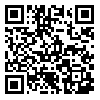Volume 76, Issue 1 (April 2018)
Tehran Univ Med J 2018, 76(1): 26-32 |
Back to browse issues page
Download citation:
BibTeX | RIS | EndNote | Medlars | ProCite | Reference Manager | RefWorks
Send citation to:



BibTeX | RIS | EndNote | Medlars | ProCite | Reference Manager | RefWorks
Send citation to:
Ghayoumi Zadeh H, Danaeian M, Fayazi A, Namdari F, Mostafavi Isfahani S M. Model of hierarchical self-organizing neural networks for detecting and classifying diabetic retinopathy. Tehran Univ Med J 2018; 76 (1) :26-32
URL: http://tumj.tums.ac.ir/article-1-8666-en.html
URL: http://tumj.tums.ac.ir/article-1-8666-en.html
Hossein Ghayoumi Zadeh * 
 1, Mostafa Danaeian2
1, Mostafa Danaeian2 
 , Ali Fayazi2
, Ali Fayazi2 
 , Farshad Namdari3
, Farshad Namdari3 
 , Sayed Mohammad Mostafavi Isfahani4
, Sayed Mohammad Mostafavi Isfahani4 


 1, Mostafa Danaeian2
1, Mostafa Danaeian2 
 , Ali Fayazi2
, Ali Fayazi2 
 , Farshad Namdari3
, Farshad Namdari3 
 , Sayed Mohammad Mostafavi Isfahani4
, Sayed Mohammad Mostafavi Isfahani4 

1- Department of Electrical Engi-neering, Vali-e-Asr University of Rafsanjan, Rafsanjan, Iran. , h.ghayoumizadeh@gmail.com
2- Department of Electrical Engi-neering, Vali-e-Asr University of Rafsanjan, Rafsanjan, Iran.
3- AJA University of Medical Sci-ences, Tehran, Iran.
4- Visual Communications Lab, Gwangju Institute of Science and Technology (GIST), Gwangju, South Korea.
2- Department of Electrical Engi-neering, Vali-e-Asr University of Rafsanjan, Rafsanjan, Iran.
3- AJA University of Medical Sci-ences, Tehran, Iran.
4- Visual Communications Lab, Gwangju Institute of Science and Technology (GIST), Gwangju, South Korea.
Abstract: (3865 Views)
Background: One common symptom of diabetes is diabetic retinopathy, if not timely diagnosed and treated, leads to blindness. Retinal image analysis has been currently adopted to diagnose retinopathy. In this study, a model of hierarchical self-organized neural networks has been presented for the detection and classification of retina in diabetic patients.
Methods: This study is a retrospective cross-sectional, conducted from December to February 2015 at the AJA University of Medical Sciences, Tehran. The study has been conducted on the MESSIDOR base, which included 1200 images from the posterior pole of the eye. Retinal images are classified into 3 categories: mild, moderate and severe. A system consisting of a new hybrid classification of SOM has been presented for the detection of retina lesions. The proposed system includes rapid preprocessing, extraction of lesions features, and finally provision of a classification model. In the preprocessing, the system is composed of three processes of primary separation of target lesions, separation of the optical disk, and separation of blood vessels from the retina. The second step is a collection of features based on various descriptions, such as morphology, color, light intensity, and moments. The classification includes a model of hierarchical self-organized networks named HSOM which is proposed to accelerate and increase the accuracy of lesions classification considering the high volume of information in the feature extraction.
Results: The sensitivity, specificity and accuracy of the proposed model for the classification of diabetic retinopathy lesions is 98.9%, 96.77%, 97.87%, respectively.
Conclusion: These days, the cases of diabetes with hypertension are constantly increasing, and one of the main adverse effects of this disease is related to eyes. In this respect, the diagnosis of retinopathy, which is the same as identification of exudates, microanurysm and bleeding, is of particular importance. The results show that the proposed model is able to detect lesions in diabetic retinopathy images and classify them with an acceptable accuracy. In addition, the results suggest that this method has an acceptable performance compared to other methods.
Methods: This study is a retrospective cross-sectional, conducted from December to February 2015 at the AJA University of Medical Sciences, Tehran. The study has been conducted on the MESSIDOR base, which included 1200 images from the posterior pole of the eye. Retinal images are classified into 3 categories: mild, moderate and severe. A system consisting of a new hybrid classification of SOM has been presented for the detection of retina lesions. The proposed system includes rapid preprocessing, extraction of lesions features, and finally provision of a classification model. In the preprocessing, the system is composed of three processes of primary separation of target lesions, separation of the optical disk, and separation of blood vessels from the retina. The second step is a collection of features based on various descriptions, such as morphology, color, light intensity, and moments. The classification includes a model of hierarchical self-organized networks named HSOM which is proposed to accelerate and increase the accuracy of lesions classification considering the high volume of information in the feature extraction.
Results: The sensitivity, specificity and accuracy of the proposed model for the classification of diabetic retinopathy lesions is 98.9%, 96.77%, 97.87%, respectively.
Conclusion: These days, the cases of diabetes with hypertension are constantly increasing, and one of the main adverse effects of this disease is related to eyes. In this respect, the diagnosis of retinopathy, which is the same as identification of exudates, microanurysm and bleeding, is of particular importance. The results show that the proposed model is able to detect lesions in diabetic retinopathy images and classify them with an acceptable accuracy. In addition, the results suggest that this method has an acceptable performance compared to other methods.
Type of Study: Original Article |
Send email to the article author
| Rights and permissions | |
 |
This work is licensed under a Creative Commons Attribution-NonCommercial 4.0 International License. |



